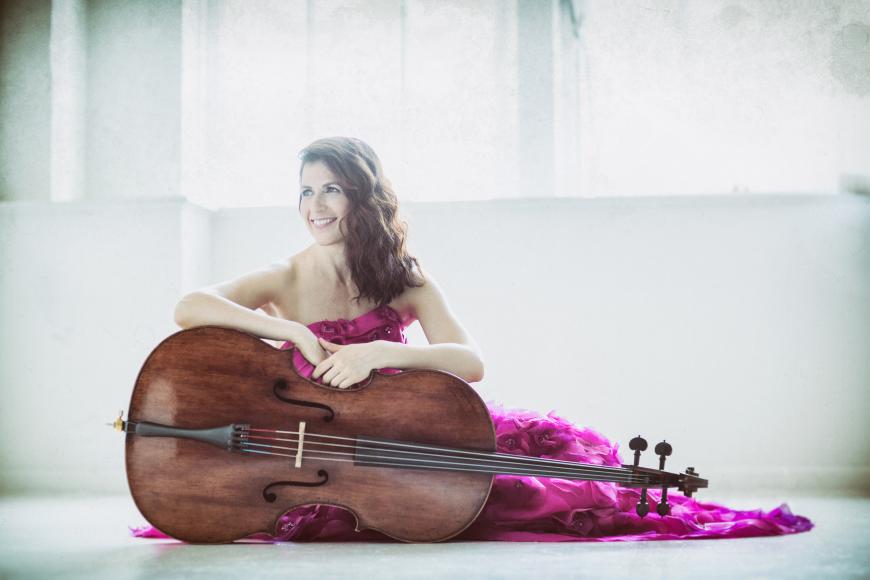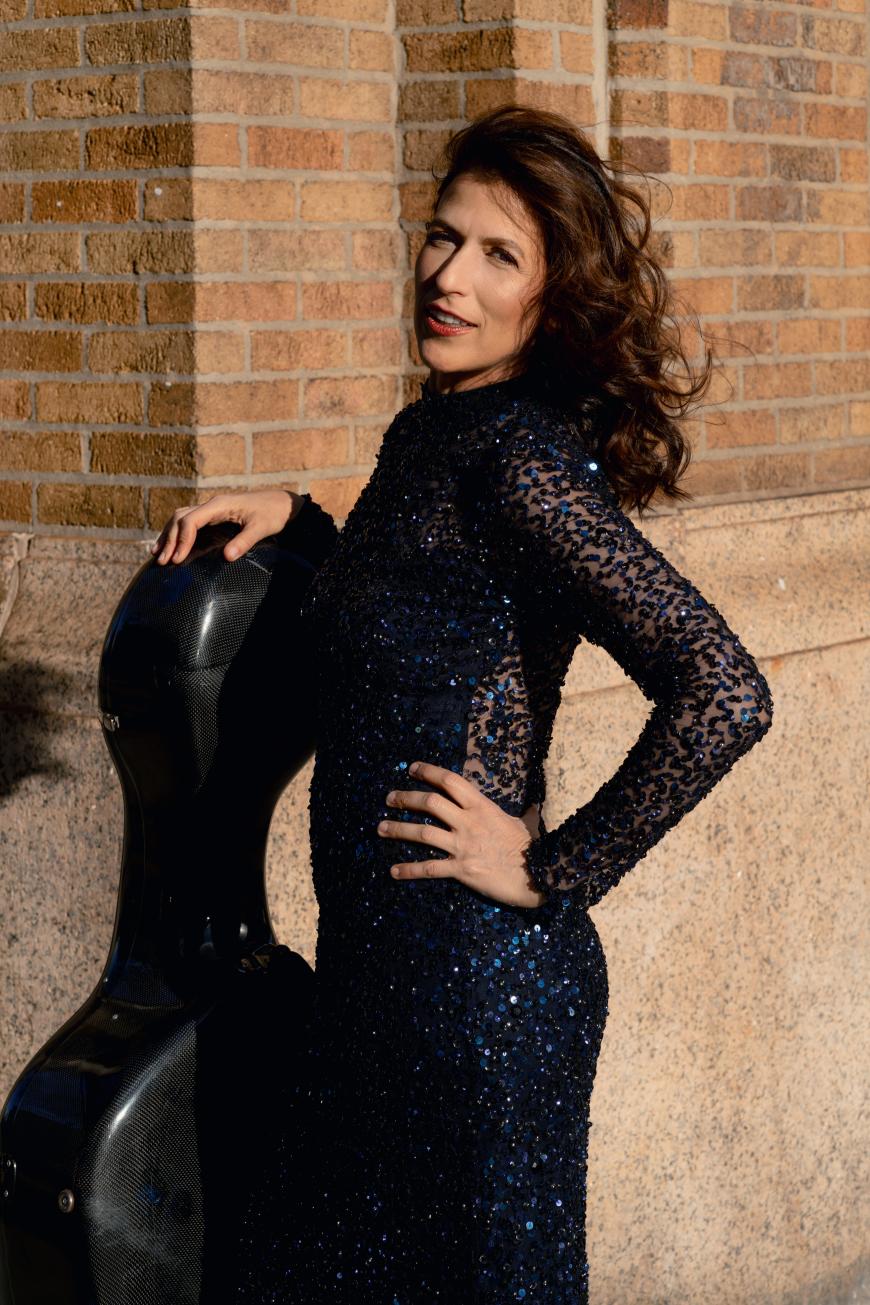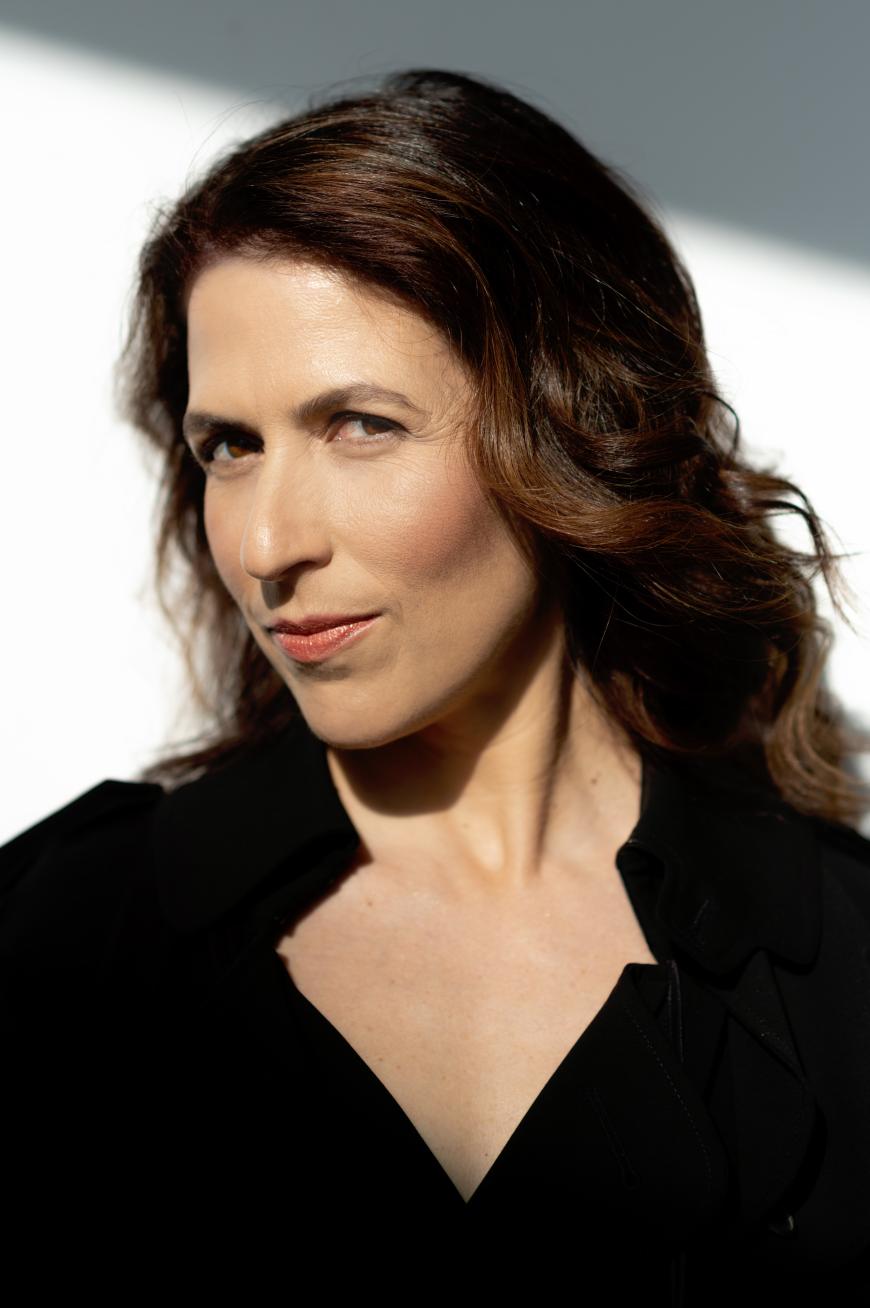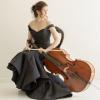
She performed for the president of Israel when she was but 8 years old, and at 16, the cellist Inbal Segev was invited by Isaac Stern to the U.S., where she continued her cello studies with, among others, Beaux Arts Trio cofounder Bernard Greenhouse. Earning degrees from Yale University and The Juilliard School, Segev has given solo performances of Bach’s cello suites at international venues from New York’s Lincoln Center and the Metropolitan Museum of Art to the Shanghai Concert Hall and the Jerusalem Theatre. Indeed, The New York Times called Segev’s performance of the works on her 2015 recording under Vox Classics “deft and thoughtful, accurate in pitch and flexible in rhythm.”
A wife and mother of three teenage children, the fiendishly busy musician, who calls New York City home, hits the road again. Making her debut with the Music@Menlo Chamber Music Festival and Institute, which runs from July 14 to Aug. 6 and celebrates its 20th anniversary this year, Segev is a dedicated chamber artist who has also undertaken international tours with the Chamber Music Society of Lincoln Center and collaborated with such esteemed musicians as Emanuel Ax, Jeremy Denk, and the Vogler Quartet. In addition, with former New York Philharmonic concertmaster Glenn Dicterow and violist Karen Dreyfus, the cellist cofounded the Amerigo Trio in 2009.
I caught up with Segev by phone from her home in New York, with our conversation ranging from her abiding love of Bach and her commitment to commissioning new works to her latest passion, composing music.

Was there music in your family, and what are your memories of performing for Yitzhak Navon, the president of Israel, in 1982, when you were only 8 years old?
Oh, my god, there was a lot of music in my family. My mom is a pianist, and we always played together until I left home at 16 to study in the States. When I was 8, it was at Yitzhak Navon’s house, and his wife was there, but he wasn’t there. She was a beautiful woman, and there were dignitaries and a panel. It was an auspicious event. It was exciting.
Do you remember what you played?
I played Beethoven’s Variations on Judas Maccabeus by Handel. It was a great little piece and my mom accompanied me on piano.
It sounds wonderful. So, you went from politicians to the preeminent musician Isaac Stern. How did the violinist change your life?
When I was 15, I played for him at the Mishkenot Center in Jerusalem, and he jumped out of his seat after I played the Cello Sonata [No. 2] in F Major by Brahms with my mom. He asked me who I would like to study with in the U.S., and he arranged it. I like to say it was a Cinderella story [because] my mom as a single parent had no means, definitely not to send me abroad. I went to Yale a year later, on a full scholarship and studied with Aldo Parisot, with him and his wife in his home.
Let’s talk about your upcoming gig with Music@Menlo: On July 16, you’re performing three works, among them C.P.E. Bach’s Cello Concerto in A Major, as well as playing in J.S. Bach’s “Coffee Cantata”; on July 24, you’re in an eclectic program celebrating the cello, including performing in [Luigi] Boccherini and [Alexander] Glazunov string quintets and Alexandre Tansman’s Two Movements for Four Cellos, from 1935. How are the programs decided?
David Finckel and Wu Han, the artistic directors, choose the programs. They have an amazing feel for everybody’s choices and what everybody’s working on. I had recorded the Bach Cello Suites, and he likes them. I’m very honored that he likes my rendition and that he really likes my Bach.
Speaking of Bach, how would you describe your affinity for the composer, and I understand that when you perform his iconic suites, you prefer to divide them into two parts?
Bach is our bread and butter, and I’m playing them more and more. New music informs my music of Bach and vice versa — the way he develops a subject, the length of phrases, it’s like a textbook. He’s so current still. After 300 and some years, Bach really speaks to us on the deepest level and the highest level. We all love Bach.
The reason I divide them — if I perform all six — is it’s very taxing, emotionally. And just physically, playing all six, it’s too much for me, and it would have been too much for the audience. Also, I don’t need to prove anything. It works for certain people, for some settings, because it’s the feeling of a festival or a marathon. I’m not saying I never [will perform them in one sitting], but I’m very content to divide those.
Nick Davis made a short documentary of you recording the suites. What was that like and where can we see the film?
It’s on my YouTube channel. I thought it was very interesting, especially when we did it, seven years ago. It was very private and felt uncomfortable to let somebody in my house and see all the things going through this, [but] it was also cathartic. It was interesting, and I’m very glad I did it.
And music lovers are glad about your “20 for 2020” commissioning and recording project, which features works by a roster of cutting-edge composers for a video series as well as a four-volume set available on Avie Records. You began the project during the pandemic and among the composers are Grammy- and Pulitzer Prize-winner John Luther Adams, Timo Andres, and Vijay Iyer.
Yes, it was born from the pandemic as a response to it. We reached out to 20 composers from diverse backgrounds to create a time capsule of what everyone felt. Everyone had a different response. Some felt free, some felt sad, some kind of happy. We’re recording the last two pieces, and this will wrap up the whole album. Three of the four parts came out already, and the last one will come out at the end of September.
You’re composing now as well, and what can we expect from volume four?
I started to compose in the pandemic. It’s been an amazing source of happiness. I use Sibelius [notation software]; it’s a great program. I don’t compose on the cello, but if I write for cello, I do try it out a little bit on the piano. Sibelius lets me hear harmony and instrumentation. We’re recording a work for four cellos, plus a cool solo piece by Immanuel Wilkins, a jazz saxophonist.
What do you look for when commissioning a work, and what’s your attraction to new music?

I look for a distinct voice of a composer. I look for, obviously, an immediate connection with the music but not on a superficial level. I’m looking for something to withstand multiple listenings and not be alienating in the first hearing, but something accessible. I felt like during the pandemic, we did more soothing pieces, but not every piece in the compilation is soothing. Immediacy connects them all, and you can understand them and get some visceral reaction right away.
Why new music? At this point, it’s such an important part of my life, I don’t even think of it. Bach, Beethoven, Brahms will always be the most amazing things that ever happened to me, but that said, moving forward is so important — moving with the times. What people come up with, even my teenage kids are digging these new pieces.
Speaking of kids, how did you manage to raise three while maintaining a concertizing musician’s hectic schedule, and what is your practice routine like?
I have a great husband who’s super supportive. It wasn’t easy, but now that they’re teens, I finally can spread my wings. I wasn’t traveling as much as I could have and said no to a lot of projects, but next year I’m going to be with a suitcase. I’m excited but a little worried because sixteen is an age that they need me, but I think it will be fine. Let’s talk in a year!
My practice routine is, basically, there’s no routine. My days are always so different. One day I can be home for a week or two, eat healthy, practice, and read a book. The other day I might practice for one hour, have rehearsal, get to the airport. It changes quite a bit. I try to do the hard work, the important practice and composing in the early hours when I’m fresh.
With concertizing musicians, it sometimes seems that their instruments become an extension of them. What is it about your 1673 Francesco Ruggieri cello that’s so special?
My Ruggieri’s going to be 350 years old next year. I have to give it a party! It’s got a chocolatey sound and looks — he’s brown. It’s a he. The gender for me, it’s a he. I’ve had him for 12 years and love the sound. He projects well for solos and is still mellow enough for chamber music. He’s a perfect partner.
Are your bows also gender specific?
That’s funny. No, but I have three bows, and two are French. One is a Fétique, the other is Husson. They’re good, very good. One had an elephant tusk tip, and a few years ago they said it might be confiscated [because of the ban on ivory], so I had to change it to silver, and now it’s not as good.
Are any of your kids musicians, and what advice would you give aspiring cellists?
One is a violin player, but he doesn’t do it super seriously. The other is an opera singer, and the third is a painter.
[As for giving] advice, I’d say, “Find your way.” Sometimes it takes a while, and I think it’s a cliché, but if you love it, stick to it, don’t give up. Find what works for you and keep at it. It’s so much about tenacity, not just about talent and luck — though those two elements are in there, too. But if you love it and you love music and you understand your personality and how you can make it happen, there’s so many ways to make it happen. You can be a teacher, a chamber musician, a soloist, or an orchestral musician. Of course, it’s not easy, but do whatever makes you happy.




